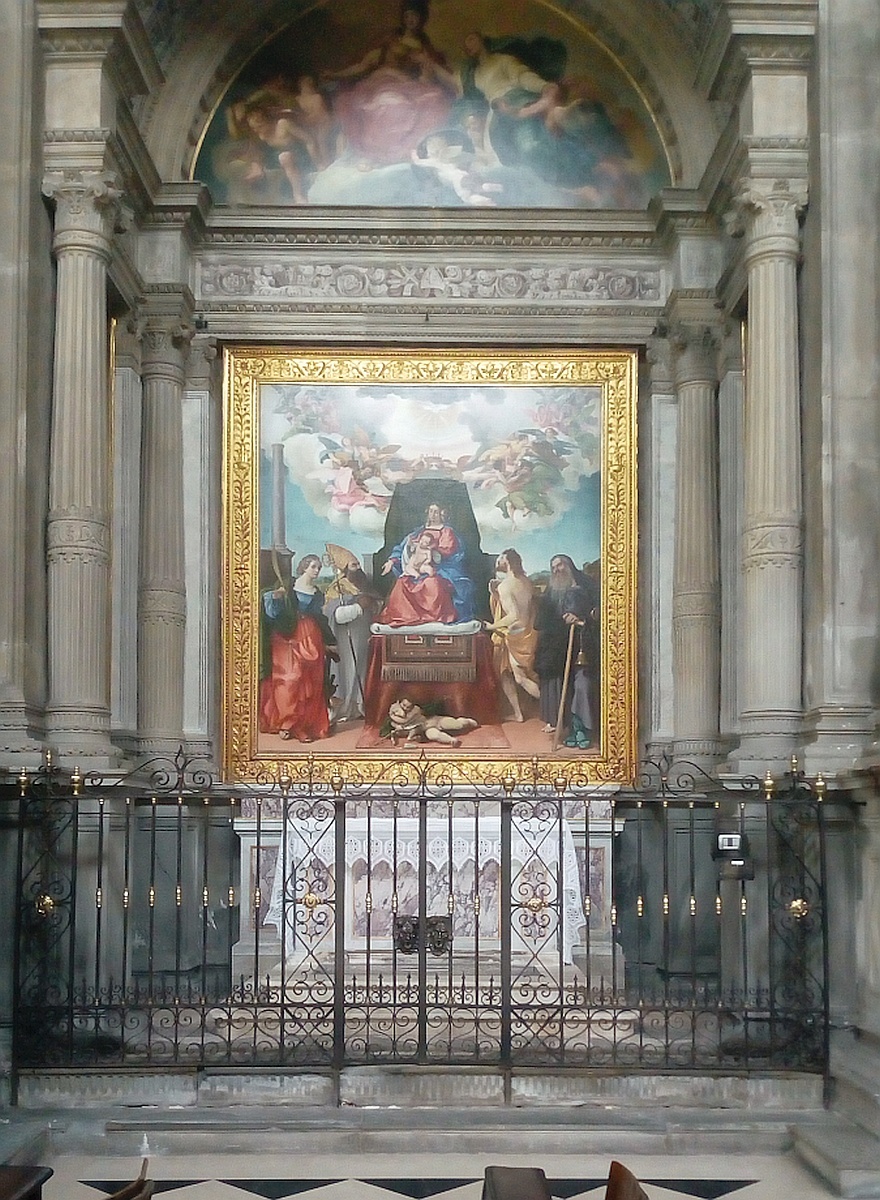Walking along via Tasso, in the centre of Lower Bergamo, you will surely notice the rough façade of this church, overtopped by the imposing bronze statue of the Holy Ghost descending to the churchyard.
The previous building belonged to a XIV Century monastery. A group of rich merchants in the XVI Century decided to radically transform it in order to establish its social status by means of a church, besides the numerous palaces.
The church renovation took a long time. Over different periods, the two major architects from Bergamo worked on it: Pietro Isabello in the XVI Century and Gian Battista Caniana in the XVIII Century.
Five chapels per side flank the central nave. The fourth one on the right hosts the wonderful Altarpiece (oil on table) by the Italian Renaissance master Lorenzo Lotto, "Madonna and Child with Saint Catherine of Alexandria, St. Augustine, St. Sebastian and St. Anthony Abbot", 1521.
Lotto’s altarpiece is surely the most outstanding piece of the church: a clear blue sky filled with clouds and angels framing the Holy Ghost Dove. The majestic and imposing layout of the painting’s figures reminds of Raphael’s style, the great Renaissance master who also frescoed the Vatican Rooms.
You could arrange a sort of “eras hunt” by observing the composite and unfinished façade: the stone base, the small central rose window and the walled-in window on the right rate back to the XIV Century; on the left side, the stone connection was built in the XVI Century, while the two recesses and the gate were made around the year 1700.
Walking along via Tasso, in the centre of Lower Bergamo, you will surely notice the rough façade of this church, overtopped by the imposing bronze statue of the Holy Ghost descending to the churchyard.
The previous building belonged to a XIV Century monastery. A group of rich merchants in the XVI Century decided to radically transform it in order to establish its social status by means of a church, besides the numerous palaces.
The church renovation took a long time. Over different periods, the two major architects from Bergamo worked on it: Pietro Isabello in the XVI Century and Gian Battista Caniana in the XVIII Century.
Five chapels per side flank the central nave. The fourth one on the right hosts the wonderful Altarpiece (oil on table) by the Italian Renaissance master Lorenzo Lotto, "Madonna and Child with Saint Catherine of Alexandria, St. Augustine, St. Sebastian and St. Anthony Abbot", 1521.
Lotto’s altarpiece is surely the most outstanding piece of the church: a clear blue sky filled with clouds and angels framing the Holy Ghost Dove. The majestic and imposing layout of the painting’s figures reminds of Raphael’s style, the great Renaissance master who also frescoed the Vatican Rooms.
You could arrange a sort of “eras hunt” by observing the composite and unfinished façade: the stone base, the small central rose window and the walled-in window on the right rate back to the XIV Century; on the left side, the stone connection was built in the XVI Century, while the two recesses and the gate were made around the year 1700.
Getting there
270 metres away (via Camozzi): Carpark in via Camozzi, with reserved parking spaces.
200 metres away (via Camozzi): bus stops for line C and other lines; step height 15cm; bus equipped with manual platform.
Footpath from parking lots and bus stop: flat and adequate in terms of width; paving in split stone slabs; no tactile ground surface indicators. Traffic light controlled street crossing with connection slides and tactile ground surface indicators.
Entering
Entrance preceded by a 12-15cm step; door suitable in terms of width and maneuverability.
Visiting
Internal space is a single, flat and practicable nave; presbytery preceded by 4 steps.
Visible works of art, but without labels and/or explanatory panels. Lotto altarpiece with lighting upon payment.
There are no measures for the visually impaired.
Using the bathroom
There are no bathrooms.
Synthetic evaluation
O: accessible with a companion.
/: not very accessibile.
Gallery
Fermata del bus di via Camozzi.
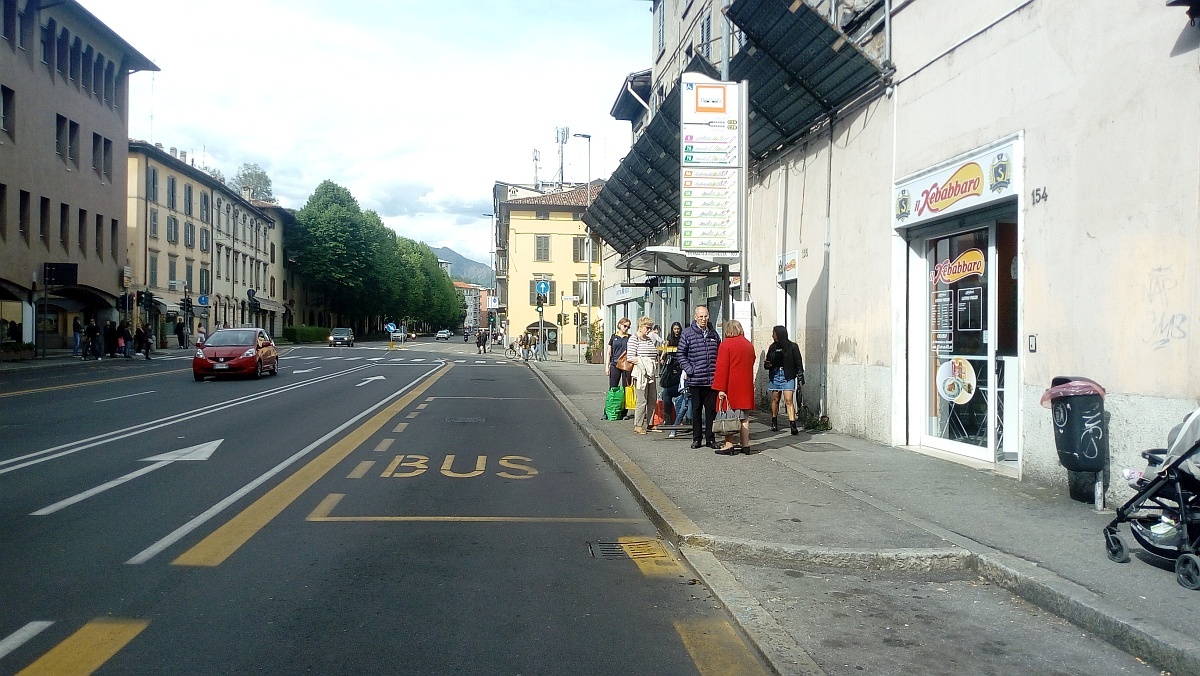
Fermata del bus di via Camozzi.
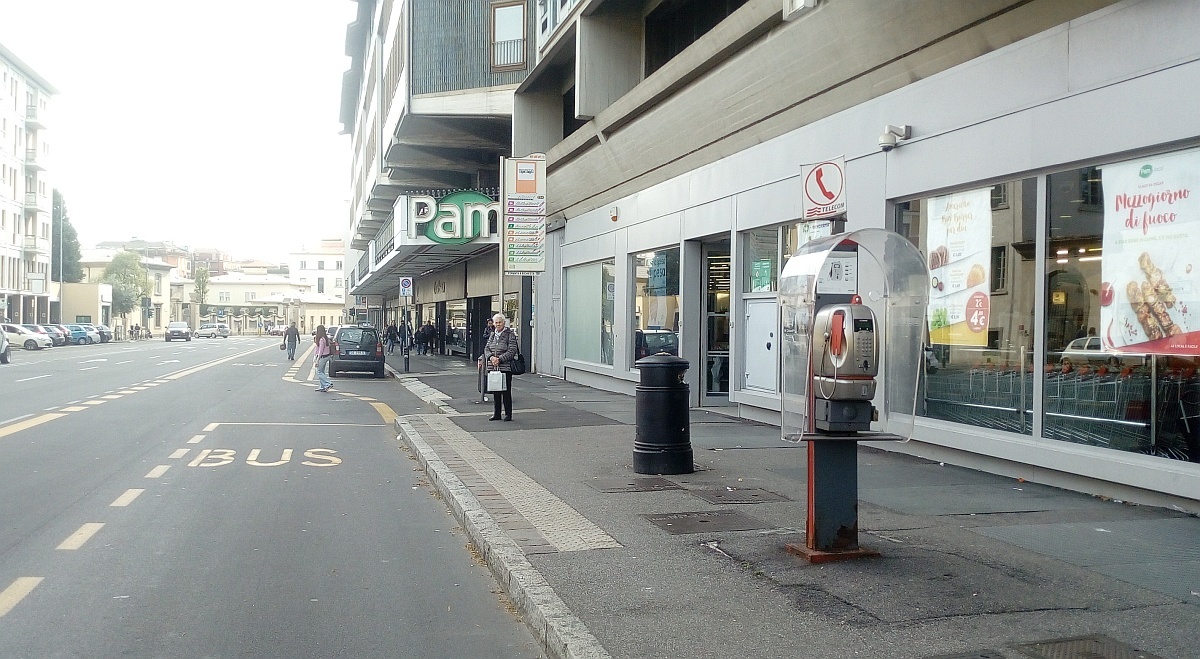
Attraversamento stradale via Camozzi.
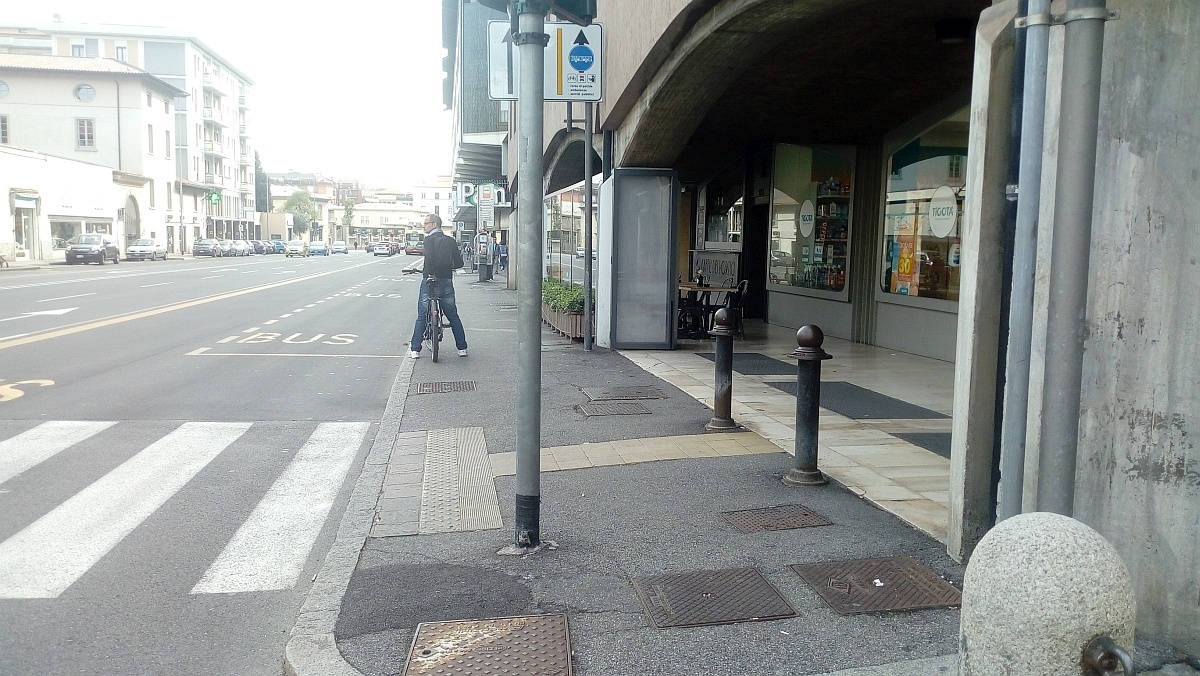
Ingresso.
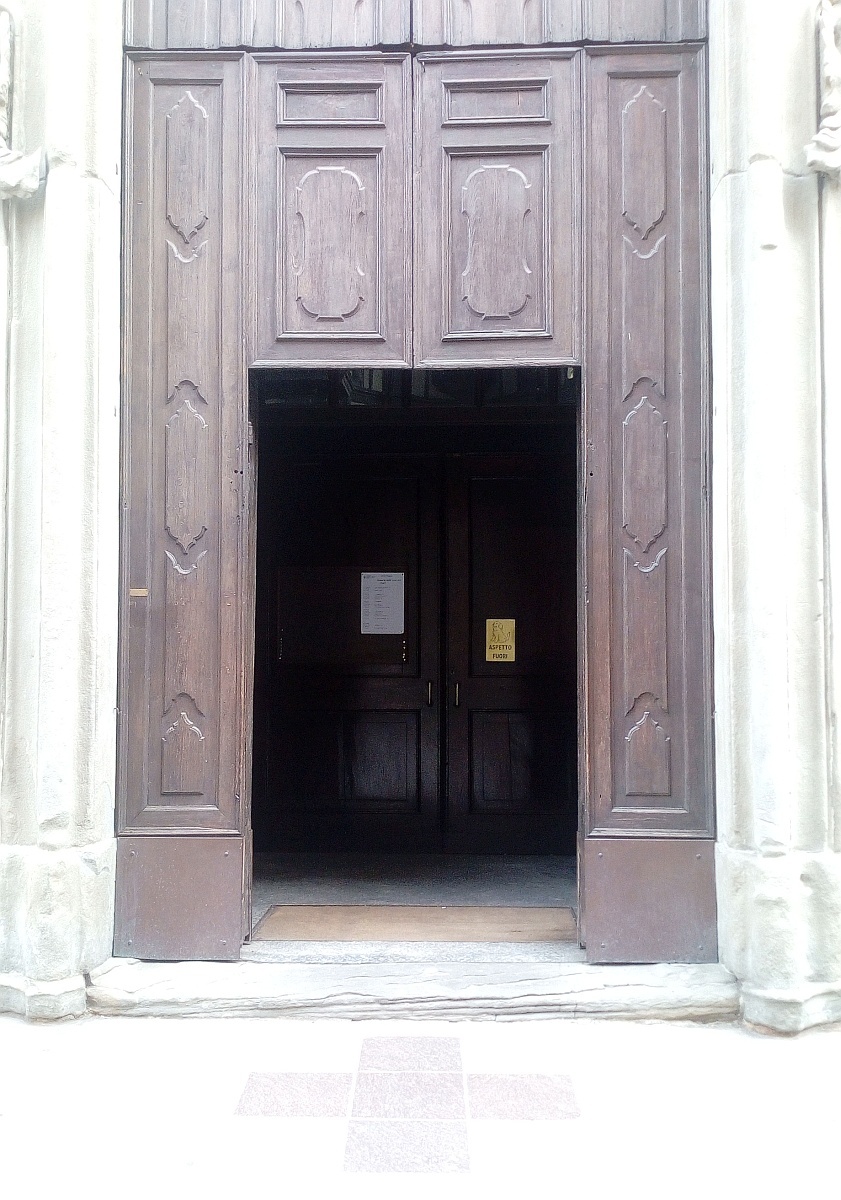
Interno.
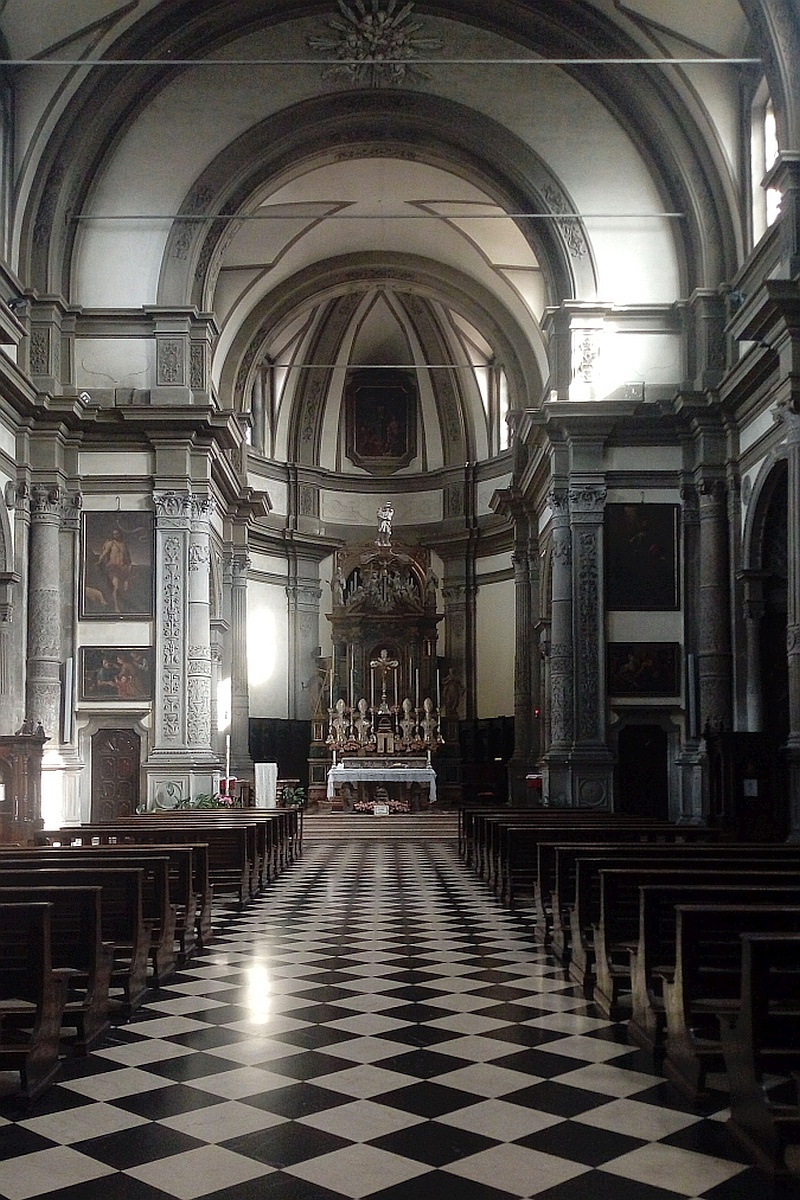
Pala di Lorenzo Lotto.
